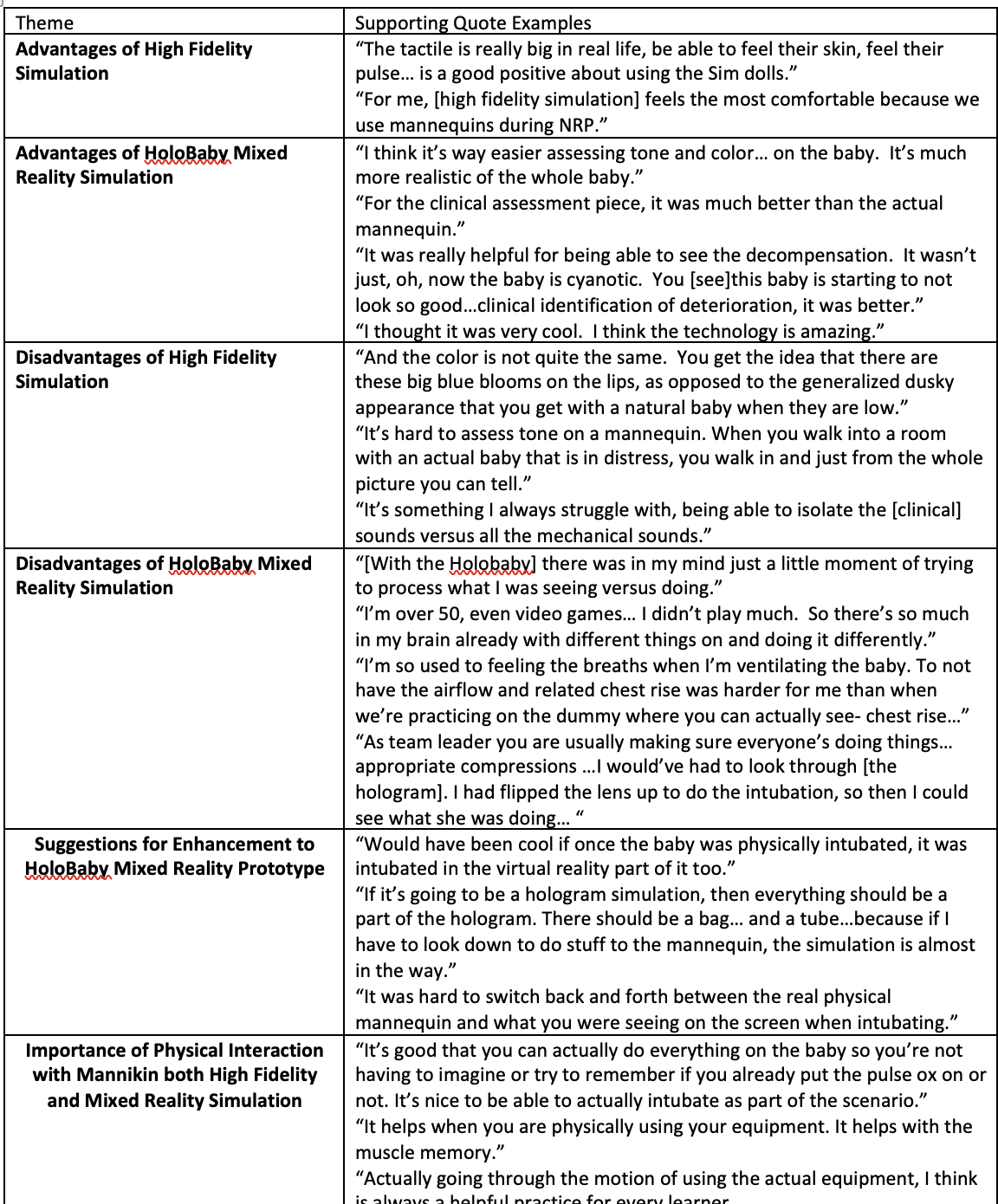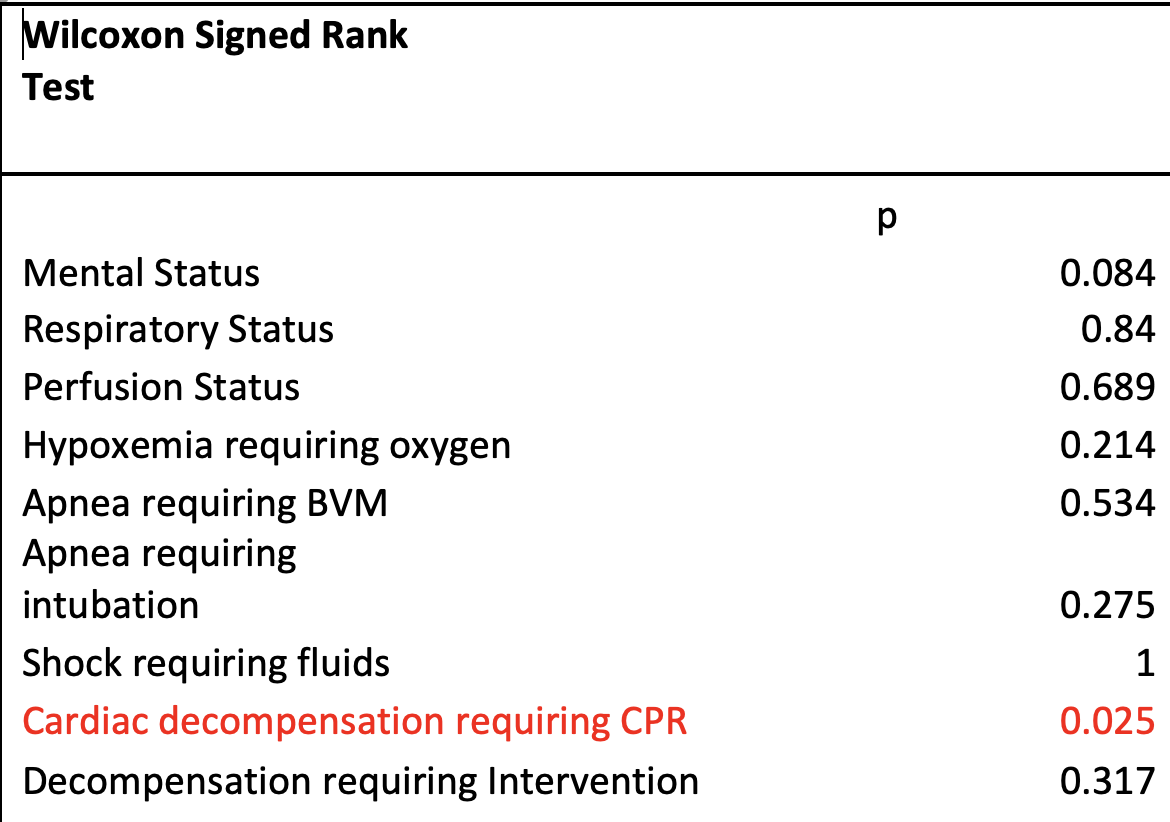Medical Education
Session: Medical Education 9
508 - Rural Birthing Hospital Pilot using HoloBaby Mixed Reality Simulation for Neonatal Resuscitation Training
Monday, May 6, 2024
9:30 AM - 11:30 AM ET
Poster Number: 508
Publication Number: 508.2846
Publication Number: 508.2846

Mary C. Ottolini, MD, MPH, MEd (she/her/hers)
Pediatric Department Chair
The Barbara Bush Children’s Hospital
Portland, Maine, United States
Presenting Author(s)
Background: Telesimulation is effective to improve rural hospital neonatal resuscitation team performance, but the high price of high-fidelity (HF) mannikins make it cost prohibitive for many under-resourced communities. We iteratively improved “HoloBaby” TM a mixed reality (MR) simulation prototype based upon neonatology expert feedback to refine an innovative solution to address rural neonatal resuscitation training at a fraction of the cost of a HF mannikin.
Objective: To determine rural pediatrician perspections of our updated "HoloBaby" TM technology compared to HF neonatal simulation.
Design/Methods: "HoloBaby"TM is an application using HoloLens 2 to project a hologram of a neonate onto an inexpensive mannikin. The HoloBaby's physical and physiologic state can be changed based upon varied scenarios and the actions of team members during the simulation analogous to a HF mannikin. We recruited a convenience sample of 12 interprofessional clinicians from a rural community birthing hospital. Subjects participated in a known HF simulation followed by a MR simulation utilizing the HoloBabyTM. We used a mixed methods design to collect rural healthcare providers perceptions of MR compared to HF using post-simulation surveys and focus groups.
Results: Qualitative analysis of focus groups revealed the following 6 themes: 1) Advantages of HF including familiarity with the mannikin and ability to perform NRP procedures; 2) Advantages of MR including more realistic depiction of decompensation in tone and color;3 ) Disadvantages of HF including inability to see clinical cues such as color change and change in tone as well as heart and lung sound quality; 4) Disadvantages of MR including unfamiliar technology leading to an increase in cognitive load and difficulty performing procedures with the hologram in place; 5) Suggestions for MR improvement such as adding holographic depiction of procedures and 6) Importance of physical interaction of the mannikin regardless of HF or MR technology to facilitate "muscle memory" for procedures (Table 1) Quantitative survey analysis results are shown in Table 2. Consistent with qualitative analysis the MR HoloBaby was superior to HF for recognition of clinical deterioration.
Conclusion(s): We identified limits and opportunities for HoloBabyTM MR technology to enhance simulation education in rural settings. HoloBabyTM matched or exceeded high-fidelity manikin experience in the fields of realism assessed. HoloBabyTM demonstrated promise to offer a training in a resource poor setting.


